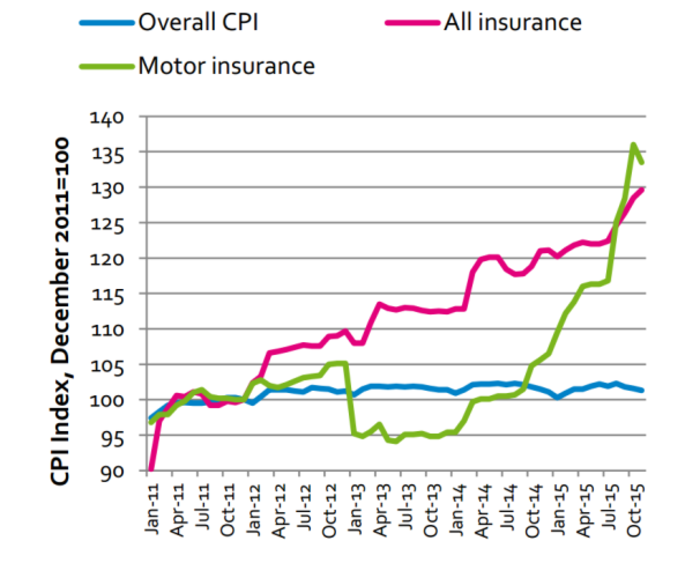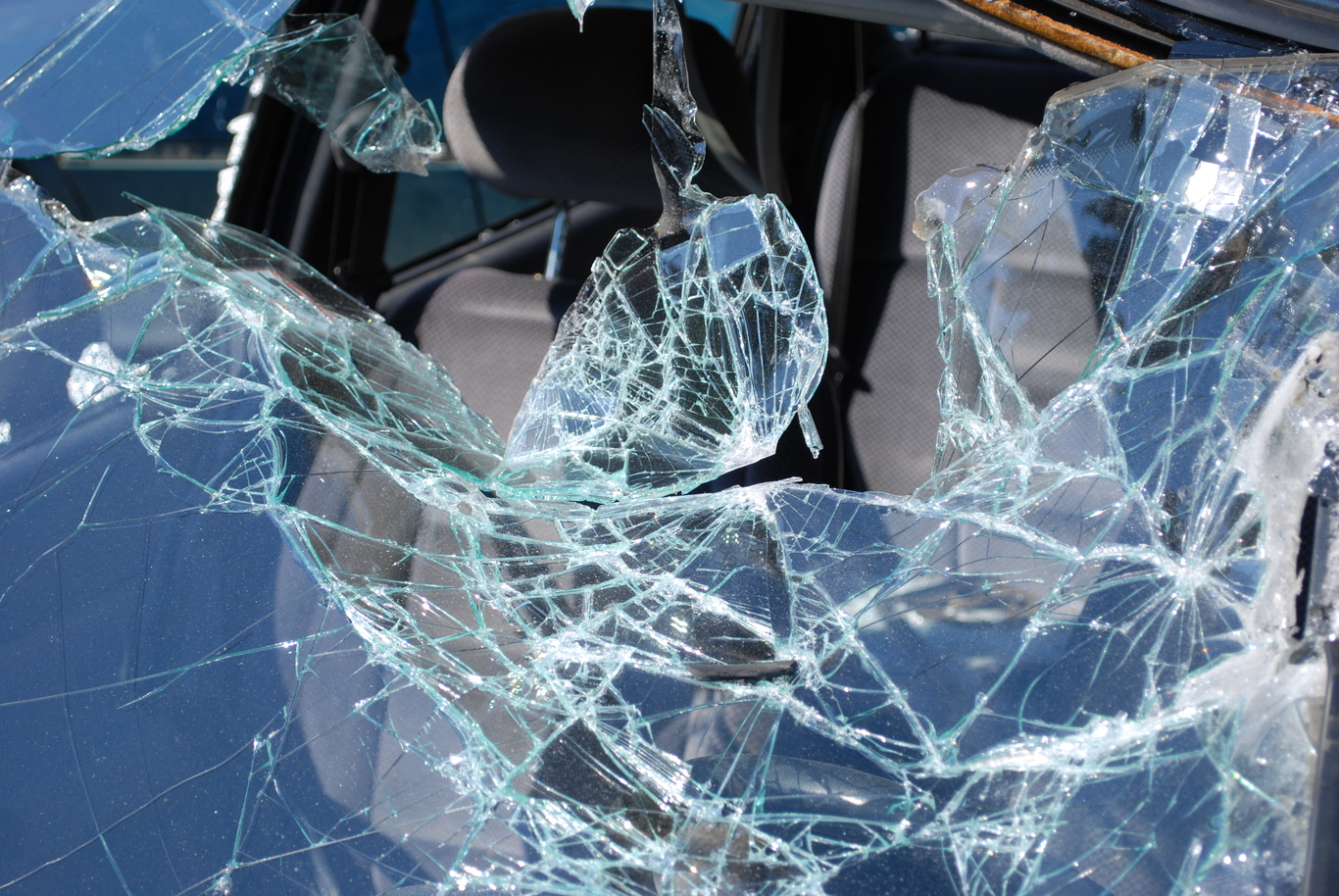How rising insurance costs are squeezing small Irish businesses dry
Some firms have been quoted threefold increases in their premiums.
SMALLER IRISH BUSINESS are feeling the pinch as insurance costs skyrocket, with many owners left wondering how they are going to foot the bills.
In January, a report from the government’s competitiveness watchdog, the National Competitiveness Council (NCC), highlighted that insurance costs are one of the issues of “greatest concern to businesses” in the country.
Overall insurance costs in Ireland have increased 30% during the past five years, while motor insurance has jumped by more than a quarter in the past 12 months alone, according to CSO figures.
However the data doesn’t tell the full story for businesses, as the official numbers represent only the consumer sector.
Anecdotal evidence suggests SMEs may, in fact, have been hit with even larger increases on some policies – with reports of two- and three-fold hikes in rates.
 Consumer Price Index, Jan 2011-Nov 2015
Consumer Price Index, Jan 2011-Nov 2015
One of those businesses faced with an significant hike in its premiums this year is KS Construction. The company’s managing director, Kevin Stanley, told Fora that even after spending significant time shopping around he couldn’t find any firm to offer a cheaper alternative to than his existing insurance provider.
“Our vehicle insurance has gone up 80% with our current insurer and when we went to price around it was going up by about 200%. We had no other choice but to take the deal with our current insurer.
“They didn’t give us a reason for the 80% hike, they just said, ‘that’s the best we can do’, and to take it or leave it.
“It’s a killer; we have five vehicles now and I think we might need to scale parts of the business back to make these costs.”
The political reaction
The impact of rising insurance costs on businesses has also made its way into the political debate, with several TDs raising the issue in the Dáil.
Fianna Fáil TD John McGuinness claimed SMEs in his Carlow-Kilkenny constituency had been quoted 100% hikes in their premiums, while independent Michael Fitzmaurice said one firm’s insurance bill for 11 trucks had risen from €80,000 to €125,000 in the space of a year.
 Fianna Fáil TD John McGuinness
Fianna Fáil TD John McGuinness
More recently, Fianna Fáil’s jobs spokesman Niall Collins said one taxi business had seen its insurance rates rise from €7,000 in 2013 to €30,000 two years later.
Earlier this week, Finance Minister Michael Noonan began the second phase of the government’s review of the Irish insurance sector, with the motor sector now under the spotlight.
However, particularly with comprehensive data on insurance rates for businesses hard to come by, the review is unlikely to focus on the problems experienced by SMEs.
On the front line
ISME chairman James Coghlan told Fora that insurance costs had been quickly shooting up the hierarchy of regular charges businesses had to pay.
“Take an SME that is in the domestic marketplace; if there are no raw materials costs, the biggest cost will be wages. Next biggest would have been property cost and energy cost, but now it could well be insurance.
“Insurance was always a significant cost for any businesses, but in the last 12 to 24 months it has become an even bigger cost for no apparent reason.
“For some businesses they have seen insurance rates rise two and threefold, mainly caused by liability insurance cost increases. This type of cost escalation is not sustainable.”
Nevertheless, gauging the true extent of the insurance problem facing Irish businesses is tough due to the lack of reliable information.
Emer Lang, a senior financials analyst at Davy stockbrokers, said there no index or public data on commercial insurance rates – and that led to confusion about the size of the problem and hampered informed decisions being made to rectify the issue.
Coghlan said relevant insurance data for the SME sector should be collected so the Irish industry could be stacked up against other EU countries to highlight any headwinds domestic firms faced.
The net effect
He added there was no clear reason for insurance rates to shoot up rapidly in some sectors, however Lang said the likely cause could simply be the market levelling out.
“There are suggestions competition in the market drove premium rates down to an unsustainable level, so what we’re seeing now is premiums having to go up to compensate for that in part,” she said.
“It’s a highly cyclical industry. What always happens is when premiums are going up, it’s an attractive market and insurance companies make more money. Then they all start competing and premiums go down, claims go up and the cycle turns again.”
For its part, Insurance Ireland, the main lobby group for the sector, has put price increases down to a rise in claims and the cost of pay outs going up.
However none of the possibly reasons for cost hikes come as much comfort to business owners like Stanley – who says the spiralling charges are squeezing his operations from all sides.
“Our building rates haven’t gone up since 2009, but suppliers have put up their rates between 15% to 25% and now insurance is going up by 80% to 200%. However, we still getting undercut on a lot of our tenders for jobs, which is beyond belief.
“It’s kind of scary because I don’t know what way it’s going to go from here. If we up our rates, we’re not going to get the tenders.”





